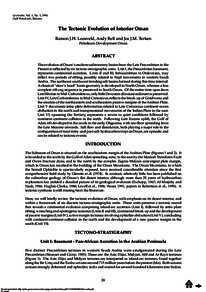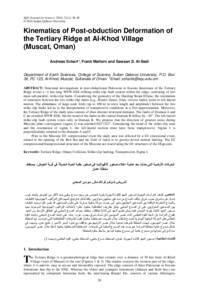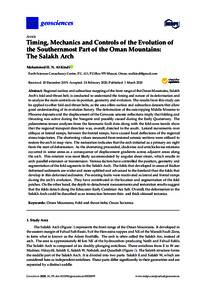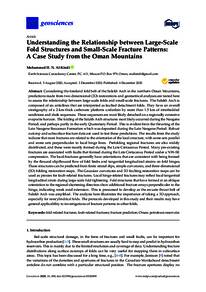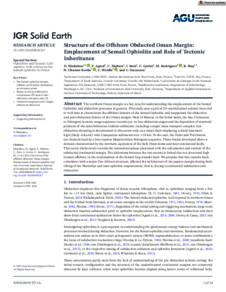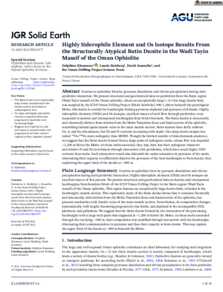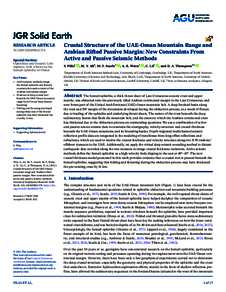وثيقة
The tectonic evolution of interior Oman.
المعرف
DOI: 10.2113/geoarabia010128
المصدر
GeoArabia. v. 1, 1, p. 28-51
المساهمون
Bell, Andy., مؤلف
Terken, Jos J. M., مؤلف
الدولة
Bahrain.
مكان النشر
Manama
الناشر
Gulf PetroLink.
ميلادي
1996-01-01
اللغة
الأنجليزية
الموضوع
الملخص الإنجليزي
The evolution of Oman’s onshore sedimentary basins from the Late Precambrian to the Present is reflected by six tectono-stratigraphic units. Unit I, the Precambrian basement, represents continental accretion. Units II and III, Infracambrian to Ordovician, may reflect two periods of rifting, possibly related to Najd movements in western Saudi Arabia. The northeast-southwest trending salt basins formed during this time interval. A classical “steer’s head” basin geometry is developed in North Oman, whereas a less complete rift-sag sequence is preserved in South Oman. Of the entire time-span from Late Silurian to Mid-Carboniferous, only little Devonian (Emsian) sediment is preserved. Unit IV, Late Carboniferous to Mid-Cretaceous, reflects the break-up of Gondwana and the creation of the northeastern and southeastern passive margins of the Arabian Plate. Unit V documents intra-plate deformation related to Late Cretaceous continent-ocean obduction in the north and transpressional movements of the Indian Plate in the east. Unit VI, spanning the Tertiary, represents a return to quiet conditions followed by continent-continent collision in the north. Following Late Eocene uplift, the Gulf of Aden rift developed in the south in the early Oligocene, with sea-floor spreading from the Late Miocene onwards. Salt flow and dissolution, both playing a major role in the configuration of most intra- and post-salt hydrocarbon traps in Oman, are episodic and can be related to tectonic events.
ISSN
1025-6059
قالب العنصر
مقالات الدوريات

